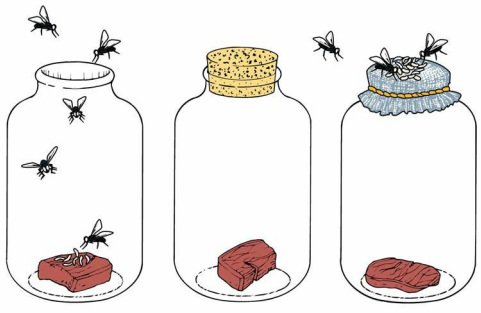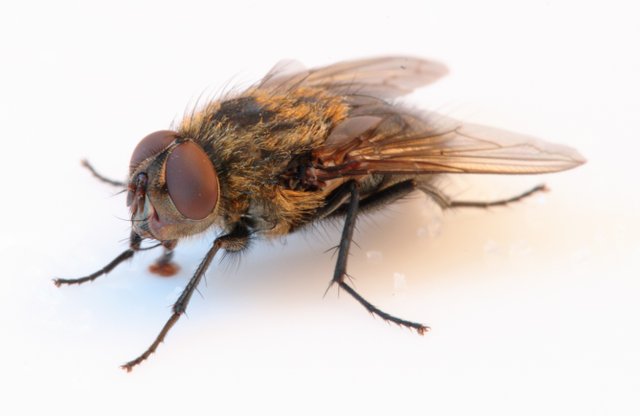Theory of spontaneous generation
The theory of spontaneous generation was a biological theory that argued that certain life forms (animal and plant) arise spontaneously from organic matter, inorganic or a combination of them.

It is a deeply rooted belief since antiquity, since it was described by Aristotle, later supported and admitted by thinkers such as René Descartes, Francis Bacon or Isaac Newton, began to be challenged in the seventeenth century. Nowadays, the scientific community considers that this theory is completely refuted.
Various experiments were carried out since 1668, to find answers, until Pasteur definitively demonstrated, in the mid-nineteenth century, that the theory of spontaneous generation is a fallacy, postulating the law of biogenesis, which states that every living being comes from another be alive already existing.

The spontaneous generation was based on the observation of natural processes such as, for example, putrefaction. This is how it was explained that, from a piece of decomposed meat, fly larvae, mudworms, organisms from wet places and even mice appeared. Generally, it was applied to insects, worms or small beings.
Experiments
The Redi experiment
Francesco Redi (1626-1697), a renowned Italian physician, was one of those who doubted spontaneous generation: he thought that insects could never be born of putrefaction. In order to prove it, he designed an experiment to determine if fly larvae developed if no adult fly was left in contact with the meat. He put the meat in three jars: one of them remained open and sealed the other two. In the open jar, he observed that there were flies continually. After a short period, there were worms only in the open jar. Redi came to the conclusion that the worms appeared in decomposed flesh only if the flies had put their eggs in the meat before.
Those who opposed Redi's ideas, because they supported the idea of spontaneous generation, argued that air had not been allowed to enter the sealed jars, so the lack of air prevented spontaneous generation. Redi redesigned his experiment and used gauze to cover the jars: they allowed the air to enter, but not the flies. At the end of the experiment no worms appeared in the meat, but the eggs of the flies were deposited on the gauze.
Redi's experiments presented evidence against the theory of spontaneous generation. Even so, the defenders of this theory did not consider it sufficient.
The experiment of Lazzaro Spallanzani
Lazzaro Spallanzani (1729-1799)] demonstrated in 1769 that there is no spontaneous generation of life, opening in some way the way to Pasteur who would work on the matter in the nineteenth century. After rejecting the theory of spontaneous generation, Spallanzani designed experiments to refute those carried out by the English Catholic priest John Turberville Needham, who had heated and then sealed meat broth in various containers. Because microorganisms had been found in the broth after opening the containers, Needham believed that this demonstrated that life arises from non-living matter. However, by prolonging the heating period and sealing the containers more carefully, Spallanzani was able to demonstrate that these wines did not generate microorganisms while the containers were kept hermetically sealed and having been sterilized.
The Louis Pasteur experiment
In the first half of the nineteenth century, Louis Pasteur conducted a series of experiments that definitively proved that microbes also originated from other microorganisms. Following Balard's recommendation, 2 used two gooseneck jars (similar to a distillation balloon with a long, curved mouth). These flasks have very long necks that are becoming thinner, ending in a small opening, and have an "S" shape. In each one of them he put equal amounts of meat broth (or nutritious broth) and boiled them to eliminate the possible microorganisms present in the broth. The shape of "S" was so that the air could enter and that the microorganisms remained in the lowest part of the tube.
After a while he observed that none of the broths showed signs of the presence of microorganisms and cut the tube of one of the flasks. The open flask took little time to decompose, while the closed flask remained in its initial state. Pasteur showed that microorganisms did not come from spontaneous generation either. Thanks to Pasteur, the idea of spontaneous generation was banished from scientific thought and from then on, the principle that every living being comes from another living being was accepted in a general way. Some of these flasks that the scientist used for his experiment are still preserved in the Louis Pasteur Museum in Paris.